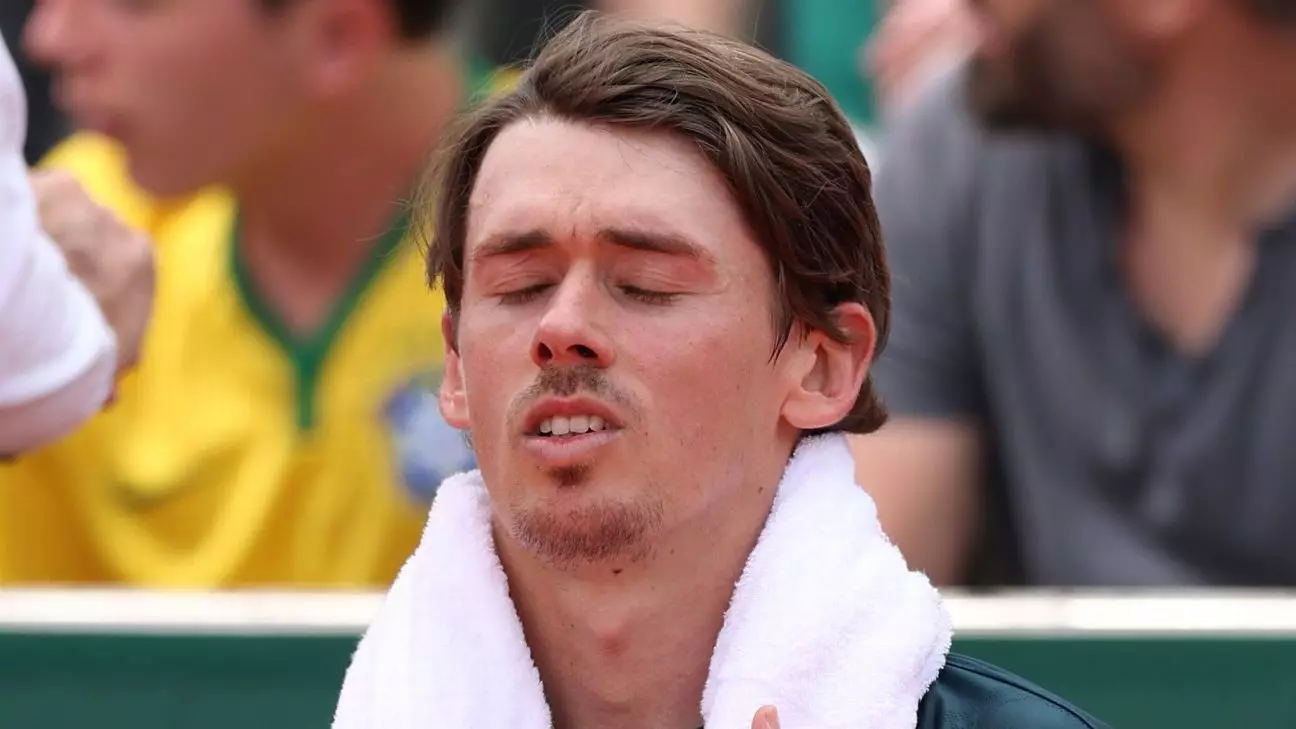In a sport revered for its athleticism and mental fortitude, the current tennis calendar is raising alarm bells among players, fans, and analysts alike. Alex De Minaur’s recent exit from the French Open ignited a vital conversation about the demanding grind of the professional circuit. As the Australian left the court after a disappointing second-round defeat, he did more than just reflect on his performance; he highlighted a growing concern about the physical and mental toll on players. The continuous cycle of tournaments—from the United Cup to the Davis Cup and beyond—offers little reprieve. De Minaur’s assertion that the sport is trapping players in a regimen that resembles an unending marathon isn’t merely hyperbole; it’s a stark reality that many are beginning to comprehend.
The Defining Moment of Exhaustion
De Minaur’s candid acknowledgment of his exhaustion illustrates the dangers of a congested calendar. He expressed that, even during his brief winter break, the focus was less about recovery and more on preparing for an overwhelming schedule that stretches to November. The questions emerging from his situation are critical: Are players sacrificing their well-being for the sake of ranking points and sponsorship contracts? The aspect of burnout—both mental and physical—is a lurking beast, threatening to shorten players’ careers in pursuit of an ever-elusive victory.
This concern was echoed by Casper Ruud, who chillingly described the ATP’s ranking system as a “rat race.” His discomfort navigating this system, primarily driven by mandatory events that require participation even when injuries are present, shines a light on a paradox within the competitive structure. Players face acute pressure not only to perform but to maintain their rankings at all costs. It seems bizarre that in a sport defined by resilience and strength, athletes are forced to compete while injured, leading to a vicious cycle of sustained pain and subpar performances.
Mandatory Events: A Double-Edged Sword
The concept of mandatory events serves a purpose—ensuring attendance at major tournaments and ostensibly maintaining a high standard for competition. However, the penalties for absences are severe. Ruud pointed out that missing such events incurs a 25% cut in a player’s year-end bonus. This punitive structure incentivizes risk-taking behavior, pressuring players to compete despite physical setbacks. Sidelined athletes risking further injury in a bid to keep their ranking intact complicates the overarching narrative of sportsmanship.
To say that players like Ruud and De Minaur represent a small faction within the bigger tennis world would be an understatement. As the sport faces an increasing number of players vocalizing similar sentiments, it underscores the notion that this is more than an individual struggle; it reveals systemic flaws entrenched within the ATP schedule. The ATP must recognize the impending danger of player burnout and explore concrete solutions to recalibrate the demanding calendar.
The Need for Structural Reform
What’s evident is that drastic changes are needed. A call for a reevaluation of the tennis calendar isn’t merely a demand for fewer tournaments; it’s an appeal for the preservation of athletes’ health and careers. There’s a need for a shift that prioritizes the well-being of players alongside competitive integrity. Solutions could include extending the off-season, reforming the ranking system to be less punitive for injuries, or adjusting the frequency of mandatory events. While this conversation has been ongoing, it is growing more urgent as player burnout becomes a widely recognized phenomenon.
Moreover, the ATP’s silence on these pressing issues raises further concerns. As the voices of frustrated and fatigued athletes grow, it is imperative for the governing body to engage with these sentiments constructively. A proactive, empathetic response from tournament organizers could pave the way for a healthier landscape in professional tennis, something that all stakeholders—players, fans, and sponsors—deserve.
The athletes take center stage in this evolving narrative. By demanding a shorter calendar and better structure, they are not just advocating for themselves but are also participating in a collective effort to enhance the sport’s future sustainability. The time has come to listen to the players; their experiences may illuminate a path forward that ensures the integrity of tennis while valuing its heart and soul—its players.

